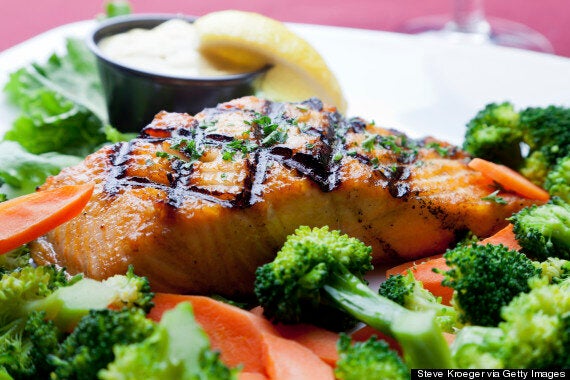You may think you're a pro at healthy eating, but have you had the same diet for 10, 20 or even 30 years?
You may be surprised to hear that your body requires specific nutrients as you progress through each stage of life, and therefore what used to be a healthy diet for you, may not be anymore.

To enable you to look and feel your best at each stage of your life, nutritionist Sarah West provides these tips for having a healthy, balanced diet at every age:
In your 20s
Healthy eating is often quite far down your list of priorities when you’re in your twenties; studies suggest that 20-somethings eat 25% more fast food than they did in their teens and that only 4% consume their five-a-day target for fruit and vegetables.
However, your twenties are the ideal time to lay down a healthy foundation for the decades ahead.
Bone density continues to grow until your late twenties, so nutrition for bone health is crucial at this stage to lower the risk of osteoporosis later in life. Calcium and vitamins K and D are vital and can be obtained through dairy products, green leafy vegetables, egg yolks and salmon.
In your 30s
Your 30s can be a hectic time – juggling the demands of an active social life and a career can often lead to poor food choices and eating on the run, so it’s important choose healthy convenience foods where possible.
Microwavable brown rice sachets, frozen vegetables, eggs, pre-cooked prawns and wholewheat pasta are all excellent supermarket staples for this period.
A woman’s thirties are also their key childbearing years, making folate (and folic acid, the form used in dietary supplements and fortified foods) a key nutrient.
Pregnant women and those planning to get pregnant should take 400 micrograms of folic acid in the form of a supplement, in addition to eating folate-rich foods (such as kale, spinach and broccoli).
In your 40s
Your metabolism begins to slow in your 40s. Excess weight is a risk factor for heart disease, diabetes and osteoarthritis, so it’s a very important time to focus on healthy food choices.
Replacing high-glycaemic carbohydrates with smaller portions of wholegrain alternatives (plus plenty of fibre-rich fruits and vegetables) will help fill you up without adding unnecessary calories.
Your levels of the hormone oestrogen also start to decline in your 40s – often causing pre-menopausal symptoms - so it can be helpful to include phytoestrogens in your diet. These are foods that possess hormone-like properties and mimic the effect of oestrogen at low doses – including soya beans, flaxseed, wholegrains, bran and beans.

Oily fish
In your 50s
As you age the synovial fluid content of the joints is reduced, making them stiffer. Cartilage degenerates and ligaments shorten and lose some flexibility, making arthritis and aching joints a common problem for women in their 50s.
GOPO is a natural anti-inflammatory compound derived from rose-hips that is clinically proven to reduce inflammation and pain in active adults with joint pains. Due to the drying process needed to isolate the active compound, GOPO can only be taken in the form of a food supplement.
It may also be helpful for women in their 50s to include anti-inflammatory foods in their diet, such as oily fish (salmon, mackerel, anchovies, fresh tuna, herring and sardines), plus anti-inflammatory spices such as cinnamon, turmeric and ginger.
60+
As we grow older, various physiological and psychological changes occur which have a direct effect on nutritional requirements. Your body becomes less efficient at absorbing and using many vitamins and minerals and long-term use of prescription drugs can reduce the absorption of certain nutrients.
At the same time, many people find that as they get older their appetite decreases. Since your requirement for vitamins and minerals remains the same, it becomes even more important that the food you eat is healthy and nutritious to prevent you from becoming deficient.
If you don’t eat as much as you used to, try consuming smaller meals more often and supplementing them with nutritious snacks, such as fruit, vegetables and wholegrain toast.